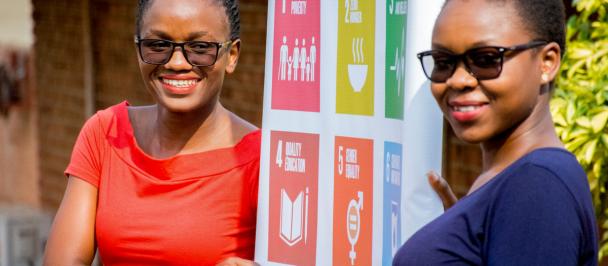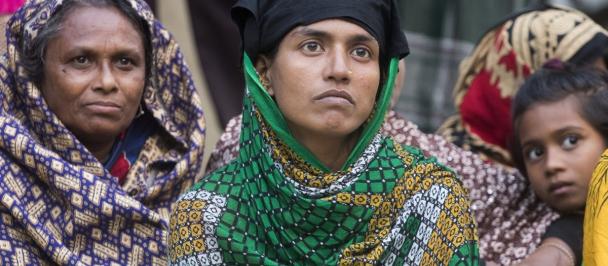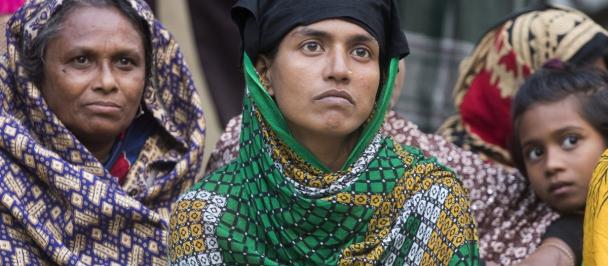Dear distinguished delegates,
· It is a paradox of our societies that with so many resources, knowledge, technology, and innovation, poverty has not been eradicated. The reasons for this vary.
· Where economic growth happened, it may not have been sufficient, sustained or inclusive. For instance, seven of the 13 fastest growing economies in the world are among least developed countries – Bhutan, Democratic Republic of the Congo, Ethiopia, Mozambique, Myanmar, Rwanda and United Republic of Tanzania.
· We all know that growth is a critical element to eradicate poverty, but not sufficient. In a business as usual scenario, with rising inequalities, where growth bypass most of the population, the international commitment to eradicate extreme poverty will not be met by 2030. As the income gap across our societies increase and access to opportunities decrease for certain segments of the population, persistent inequalities further deepens poverty.
· So, how to truly move the needle on poverty? First, let’s make it clear: there is no ‘silver bullet’ or clear set of policies and related competencies that, if applied, will result in poverty eradication. Poverty is directly dependent on context, types of problems and priorities. Take the least developed countries for instance, there are striking differences within this category: out of the 47 LDCs - 17 are middle-income countries, 9 are small island developing States, 17 are landlocked and 20 are considered fragile. Therefore, our approach to poverty eradication must be context specific and multidimensional.
· The 2018 Independent Evaluation of UNDP’s support on poverty reduction in Least Developed Countries (LDCs) has been a critical source of learning for UNDP.
· The evaluation recognizes that UNDP’s poverty reduction approaches are highly relevant for LDCs and that UNDP remains the partner of choice for both policy and implementation support.
· The evaluation further recommends that UNDP builds on key strengths, including revitalizing local economies or recovering from conflict, furthering multidimensional approaches to tackling poverty, and deepening collaboration with relevant partners.
· It also sets out where we can improve. For example, it recommends that UNDP: improve the interlinkages between community-level sustainable livelihoods programmes and rural poverty alleviation policies; strengthen efforts to partner with the private sector; and pay special attention to youth- and gender-responsive policies and programmes.
· The Management Response to the evaluation on UNDP’s work on poverty reduction in LDCs focuses on the ‘what’ – including the priority areas which are integral to UNDP’s poverty offer and that will facilitate overcoming the structural barriers for development in LDC settings.
· Our strategy on poverty eradication expands from a pro-poor focus to an inclusive approach to development.
Multidimensional poverty and inequality measures
· On multidimensional poverty measures, UNDP will continue to strengthen its leadership by investing in applied research, technical capacities, promoting partnerships and catalyzing multi-stakeholder dialogues. In collaboration with Oxford University, we will launch a Handbook on how to prepare a national multidimensional poverty index.
· As part of our efforts to measure human impact of our work, we have introduced a new “leave no one behind marker” which identifies 18 priority groups of people targeted during project implementation, including people living in rural areas; persons negatively affected by armed conflict or violence; internally displaced persons; people living in multidimensional poverty; women; youth; persons affected by natural disasters; refugees; unemployed persons; and persons with disabilities.
Planning and budgeting
· On planning and budgeting, we will continue to prioritize this area – with an emphasizes to multidimensional poverty and concrete policy interventions to address leaving no one behind.
· Experiences such as from the Government of Bhutan’s 12th Five-Year Plan, which has identified 14 vulnerable groups through a Vulnerability Baseline Assessment will inspire our offer to integrate targeted interventions addressing the needs of marginalized groups into planning and budgeting.
Shocks, conflict and fragility
· On fragility and poverty, UNDP will continue to work closely with humanitarian, peace and national partners to jointly identify medium-term collective outcomes that have an impact on protracted humanitarian challenges including poverty indicators.
Climate change and environment
· On climate change, we know climate impact alone is expected to drive an additional 100 million people into poverty. UNDP adaptation work assists LDCs in tackling multidimensional poverty by promoting diversified and climate-resilient livelihoods, productivities and incomes.
· UNDP will further strengthen its poverty and environment impact and synergies, under its sustainable livelihoods programmes, across country programmes and vertical fund engagement.
Inclusive growth and income generation
· UNDP will continue working with countries to achieve inclusive and sustainable growth. Together with UNCDF, we will scale up our support to LDCs to promote inclusive business development and financial inclusion programmes.
Other relevant issues
· In line with our Gender Equality Strategy, we will prioritize the removal of structural barriers to women’s economic empowerment. This includes a new programme on inclusive and equitable local development, with UNCDF and UN Women, to facilitate women’s participation in the labour market.
· In our poverty offer, we will also systematically prioritize the empowerment of youth. In Rwanda, for example, the YouthConnekt platform is now operating in 10 African countries. We will continue to collaborate closely with UNICEF under the Generation Unlimited Initiative, and with ILO under the Decent Jobs for Youth Initiative.
How: delivery mechanisms
· The Management Response also focuses on the ‘how’, which are the delivery mechanisms for our offer, including the Global Policy Network and its Community of Practice on Poverty and Inequality; the Acceleration Labs; and the Finance Sector Hub.
· Internally, UNDP will leverage the Global Policy Network and its poverty community of practice – our largest knowledge network, with a growing membership of over 4,000 staff – to drive its renewed offer, share knowledge and build a solid foundation of in-depth technical expertise across country, regions and global teams.
· Our Finance Sector Hub will provide a network of finance expertise to equip countries with the best advice and services on SDG impact, climate finance, nature-based financing, Islamic financing, blended finance, and others.
· Before I conclude, let me recognize that the Management Response to this evaluation is the result of extensive consultations with Member States, IEO, and UNDP staff members, which have been unprecedented. On behalf of UNDP, I would like to thank you for engaging with us throughout this process and for your continued guidance. The Management Response provides practical, time-bound key actions to deliver on our renewed poverty reduction offer.
Thank you!

 Locations
Locations



